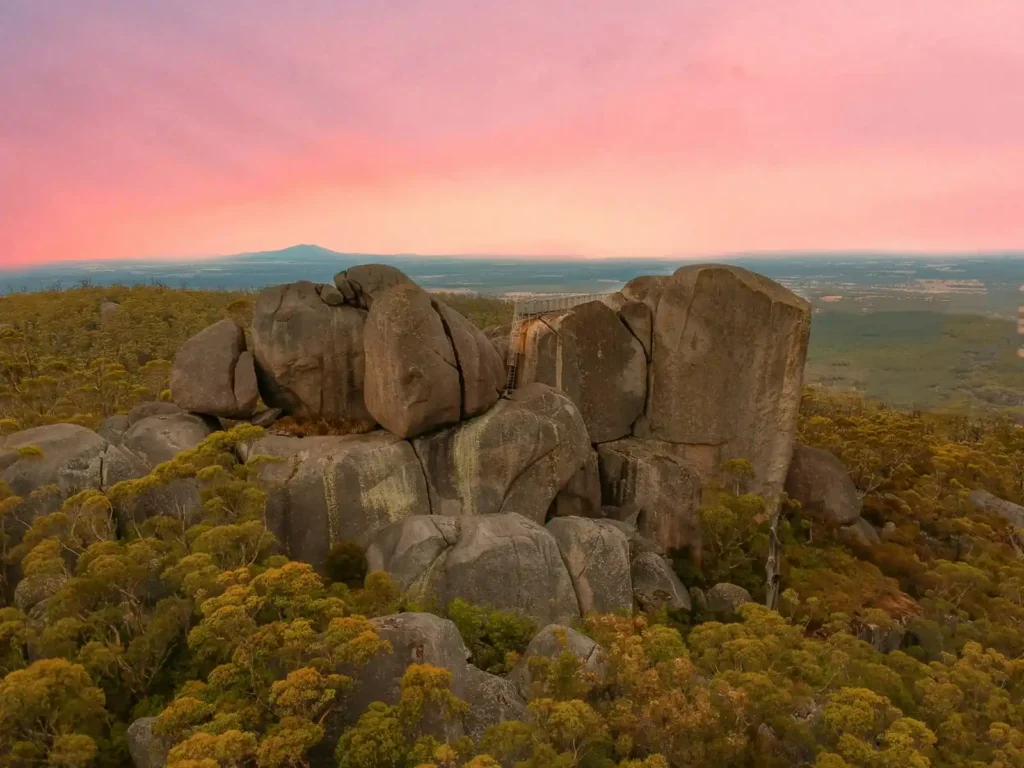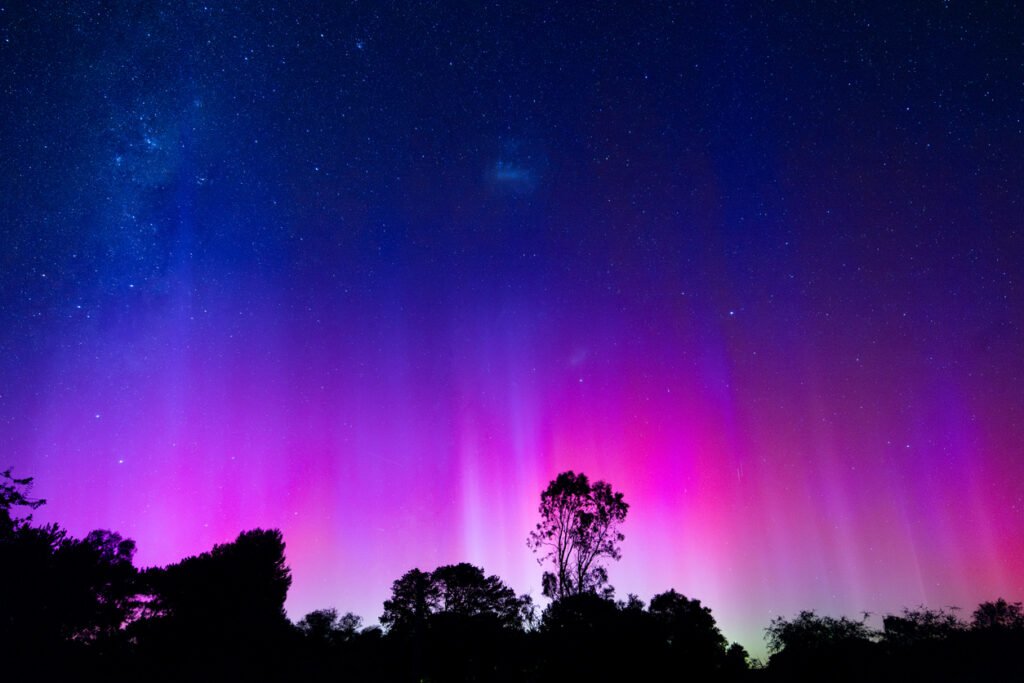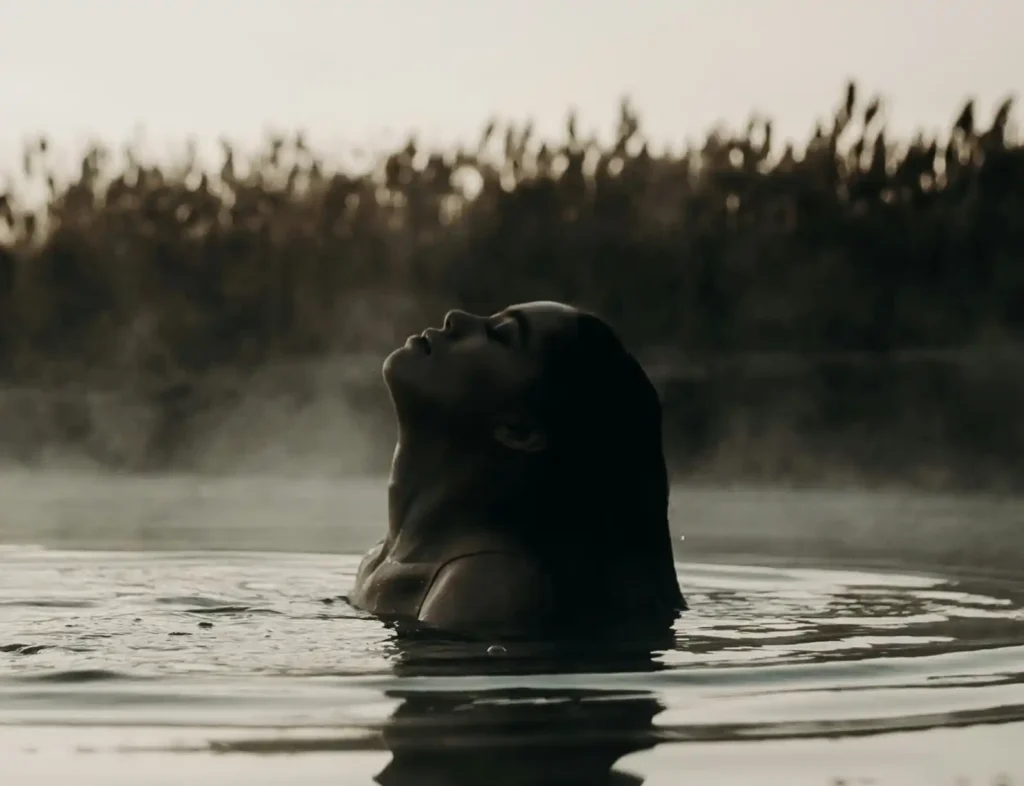A few years back, I was cruising back to Perth after visiting a mate who’d just relocated to Denmark in southern West Australia. The road was quiet, the type of stillness that lets your mind wander. Then, a sign caught my eye as I closed in on the quaint town of Mount Barker: “Porongurup National Park.” I’d of course heard of it but had never been. With no commitments pulling back to Perth in a hurry, I thought, why not? I turned off Albany Highway, unaware I was about to step into a landscape over a billion years in the making.
Skip to:
Where is the Porongurup Range?
Located about 40 minutes north of Albany and roughly 4 hours southeast of Perth, the Porongurup Range is nestled within the Great Southern region of Western Australia.
A straight shot from Perth on Albany Highway, the range rises abruptly from the surrounding plains, a series of granite domes cloaked in lush forest. It’s a place where ancient geology meets vibrant biodiversity, offering a unique escape for nature enthusiasts.
Before my first impromptu visit, I wouldn’t have been able to place it on a map. The Porongurups? Yeah, I’d heard of them. But it was an unexpected visit that led me to fall in love with the ancient range and declare to anyone headed to Albany from the big smoke, “You’ve got to check them out!”
How were the Porongurups formed?
Here was where all the tourists were hiding. The morning was in full swing and the foot traffic was relatively high on the many trails around the Porongurup region. But I took my time to study the plaques scattered about the park and found my thumb and forefinger clipped to my chin as I marvelled at the site’s long history.
The Porongurup Range was formed about 1.1 billion years old, making it one of the oldest landscapes in Australia. Long before dinosaurs, trees or even basic life on land, this granite ridge was forming—deep beneath the Earth’s crust during a massive continental collision between Australia and Antarctica.
Born from ancient pressure
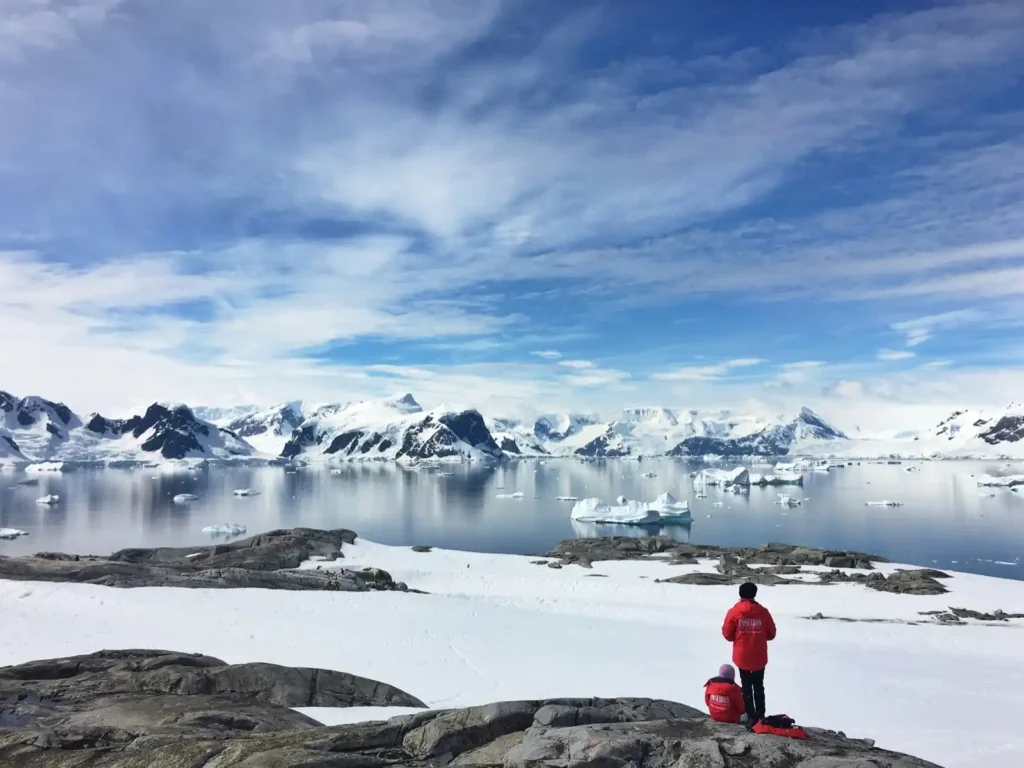
Back in the Proterozoic Eon, molten rock (magma) pushed up from the mantle but didn’t erupt. Instead, it cooled slowly underground, forming a huge granite body—known now as the Porongurup Intrusion. Over the next billion years, the softer rocks above wore away, leaving behind the tough granite domes we walk on today.
The Porongurup Range is primarily composed of granite, part of the Albany-Fraser Orogen (a very long period in which much of WA’s hilly terrains were formed). These massive boulders and domes are interspersed with lush karri forests, creating a unique juxtaposition of rugged rock and verdant greenery. The area’s geology not only tells a story of ancient Earth processes but also supports a diverse range of flora and fauna.
Sculpted by water and time
The rounded boulders you see—Castle Rock, Balancing Rock—weren’t shaped by volcanoes (as I’ve seen a few prospective visitors ask about). They’re the result of spheroidal weathering, where water seeps into cracks and gradually rounds the rock over millions of years.
So, when you’re hiking that ridge, scrambling over smooth stone, you’re literally walking across the bones of a billion-year-old mountain, sculpted by nothing more than time, water and wind.
What’s in a name?
“Porongurup” is derived from the Noongar word “Borongur,” meaning “meeting place of spirits.” For the Menang people—the traditional custodians of this land —the range holds deep cultural significance. Walking through the area, it’s easy to sense the spiritual weight of the place, with its towering trees and silent granite sentinels.
When I first visited, I managed to find a few quiet spots by stalling behind a group of tourists. The whistling wind and light breeze on my face made me feel as if I were being touched by memories of the millions of previous visitors to this place. Always hiking with a touch of philosophy in the back of my mind, I felt beyond curious about the place’s history—just grateful I had the chance to explore it.
The Granite Skywalk: a modern marvel
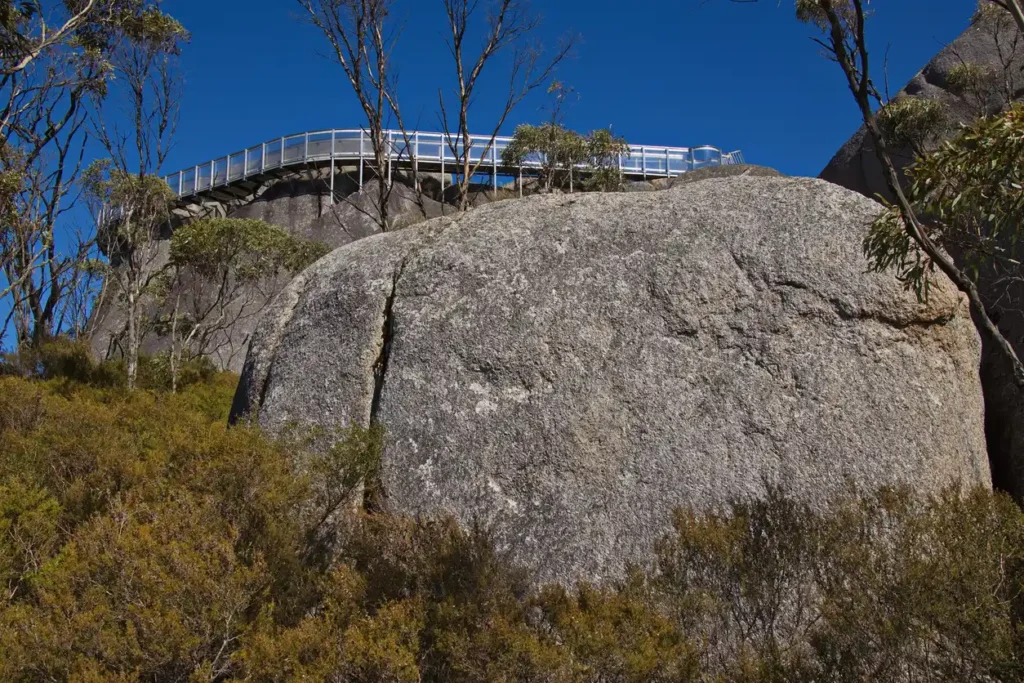
One of the highlights of the Porongurup Range is the Granite Skywalk atop Castle Rock. This suspended steel walkway, completed in 2011, wraps around the granite peak, offering panoramic views of the surrounding landscape. The construction involved drilling stainless steel supports directly into the rock, a feat of engineering that allows visitors to experience the grandeur of the range safely. This is truly worth putting on your list when you visit the Porongorups.
FAQs for your visit
Is hiking the Porongurups difficult?
The Castle Rock Trail to the Granite Skywalk is a 4.4km return hike, rated as moderate difficulty. The trail includes steep sections and a final scramble through boulders, culminating in a short ladder climb to the skywalk. The granite skywalk is a Grade 4 difficulty, wish bush walking experience recommended for those visiting.
Are the Porongurups dog-friendly?
No, dogs (and any other pets) are not permitted in Porongurup National Park. This is to protect native wildlife and the delicate ecosystem. As a general rule, if you see the words ‘national park,’ poor little fido won’t be welcome.
How far is Porongurup from Bluff Knoll?
Bluff Knoll, located in the Stirling Range National Park, is around 30km northeast of the Porongurup Range. The drive between the two popular spots of the Great Southern region takes about half an hour, making both these incredible destinations achievable for a visit in a single day (or even afternoon).
Can you camp at the Porongurups?
While camping’s not allowed within Porongurup National Park itself, several nearby accommodations offer camping facilities. Options include the Porongurup Range Tourist Park, which provides campsites and chalets in a serene setting.
What’s the cost to go to the Granite Skywalk?
Access to the Granite Skywalk is included in the Porongurup National Park entry fee, which is $17 per vehicle (standard) or $10 for concession holders. Fees can be paid at the park entrance. If you’re arriving on foot or by bike, entry is free of charge. Park Pass holders can also use their valid park pass for entry, another great reason to grab one this year.
Where to stay near the Porongurups?
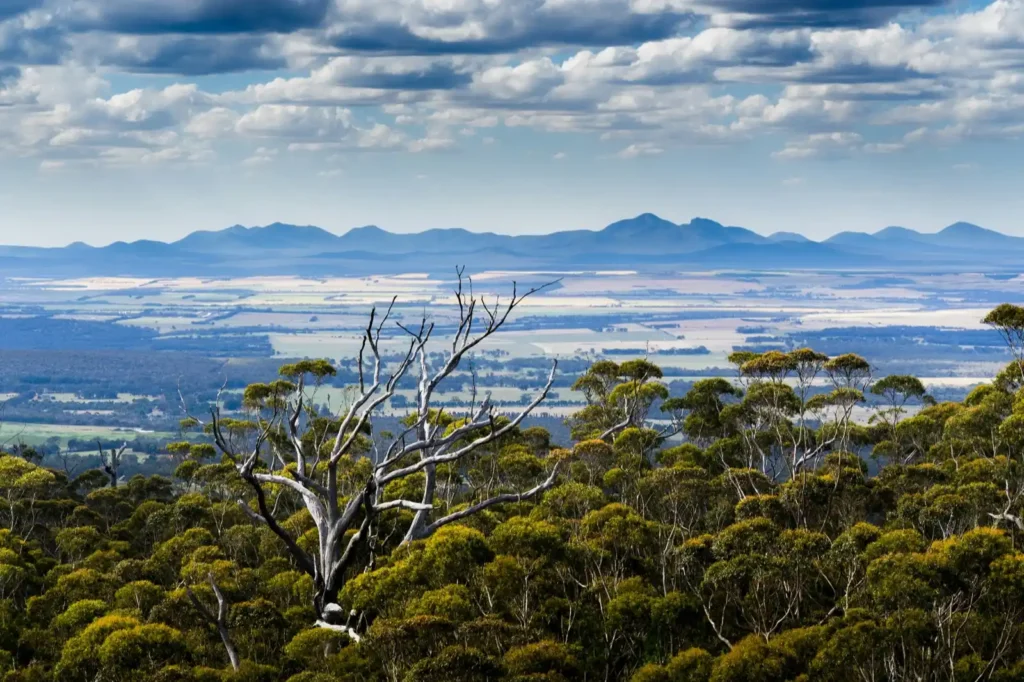
The area offers a tonne of accommodations to suit different preferences and budgets, without the need to head all the way to Albany or Denmark for a bed:
- Porongurup Range Tourist Park: Offers chalets, caravan sites and camping facilities nestled among shady trees, providing a tranquil escape with views of the range.
- Karribank and the Karri On Bar: Provides a range of family cottages and units within Porongurup National Park, combining heritage charm with modern amenities.
- Thorn’s Mountain Retreats: Features character cottages set against the backdrop of the Porongurup Range, ideal for couples or families seeking a mountain getaway.
- Bolganup Homestead: A historic farm homestead offering self-contained units and a separate cottage, accommodating 2-6 guests, with super easy access to the national park.
Can I join a tour of the Porongurups?
For sure. If you’re not into going alone or want a far better insight into the natural ancient site than you’ll find on Google (the service ain’t great out there, so don’t rely on the web to be your tour guide) several local guided tours, depending on the experience you’re looking for:
- Granite Skywalk and Porongurup Tour: A half-day bushwalking tour departing from Albany, leading to the Granite Skywalk with panoramic views of the Stirling Range and surrounding farmland.
- Porongurup Guided Rock Climbs: Adventure Training Consultants offers multi-pitch rock climbing experiences on the granite domes of the Porongurup Range, suitable for climbers seeking a challenge.
- Guided Vineyard and Winery Tour: Explore the region’s cool-climate wines with a behind-the-scenes tour of local vineyards and wineries, offering tastings and insights into wine production.
The Porongurup Range is a wonder of WA, a place that combines natural beauty, geological wonder and thousands of years of cultural significance. Whether you’re hiking to the Granite Skywalk, exploring ancient forests or savoring local wines, the Porongurups offer an enriching experience for every adventurer.
So, whether you plan ahead months in advance or just jump off the highway the next time you’re passing through, check out the Porongurups and take in the ancient wonders that are on offer.
West Australia is full of wonders. Our experts have experienced most of them—check out our their guided adventure posts to see for yourself and grab some inspo for your next journey out west.
